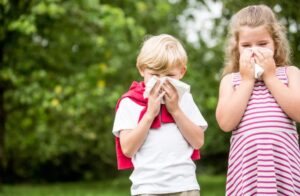As more families adopt pets, children often interact with them. While pets can bring a lot of joy, they can also pose certain health risks, especially to children with weaker immune systems. Parents need to take precautions to ensure the safety and health of their kids when they are around pets.
1. Make Sure Your Pet is Healthy and Vaccinated
Before adopting a pet, it's important to ensure that it is healthy, especially when it comes to vaccinations. Pets can carry viruses or bacteria (like rabies or parvovirus), which can pose a serious threat to children’s health. Regular health checkups and timely vaccinations are essential to keep your pet—and your child—safe.
It's also important to deworm your pet regularly and maintain a clean environment for them. Make sure to clean your pet's bedding and toys often to avoid the spread of bacteria.
2. Teach Kids Proper Hygiene
Close contact with pets increases the risk of children getting germs or bacteria. Parents should teach kids to wash their hands after interacting with pets, especially before eating. This helps reduce the risk of germ transmission.
Some kids may be allergic to pet hair or saliva, so keep an eye on any signs of allergies, such as rashes or sneezing, and take action if necessary.
3. Safe Feeding and Interaction with Pets
Teach children how to interact safely with pets. For example, kids should avoid feeding pets directly by hand and instead place food in their pet’s bowl. Pets’ claws and teeth can cause injury, so make sure to regularly trim your pet’s nails, and discourage kids from sharing food with pets.
Also, supervise your children when they interact with pets. Most pets may react aggressively if they feel threatened or overexerted.
4. Choose the Right Pet for Your Family
It’s important to choose a pet that is suitable for the child’s age. For kids under 3 years old, avoid large pets, and consider small, calm pets like rabbits or birds. Children ages 3-6 can enjoy interacting with more manageable pets, such as small dogs or cats. Kids over 6 can interact with larger pets as long as the pet is known to have a calm temperament.
Parents should also consider a pet's personality before bringing them home. Some pets don’t like being picked up or petted excessively, so it’s important to understand these behaviors to avoid problems.
5. Be Prepared for Emergencies
Even with all the precautions in place, accidents can still happen. Parents should know basic first aid, especially how to treat pet bites or scratches. It’s important to clean any wounds right away and seek medical attention if necessary. If your child has an allergic reaction from interacting with a pet, be sure to have the proper medications on hand and know how to use them.
6. Helping Kids Cope with Pet Loss
Pets can become important emotional companions for children, but the death or illness of a pet can lead to sadness. Parents should help their kids understand that pets have natural lifespans and help them through the grieving process. Holding a small ceremony or involving children in the care of the pet can help them understand and cope with loss.
Key To Takeaways
The key to keeping children safe while interacting with pets lies in managing the pet's health, teaching good hygiene habits, choosing the right pet, and being ready for emergencies. With these steps, parents can ensure that their children enjoy the companionship of pets in a safe and healthy way.













